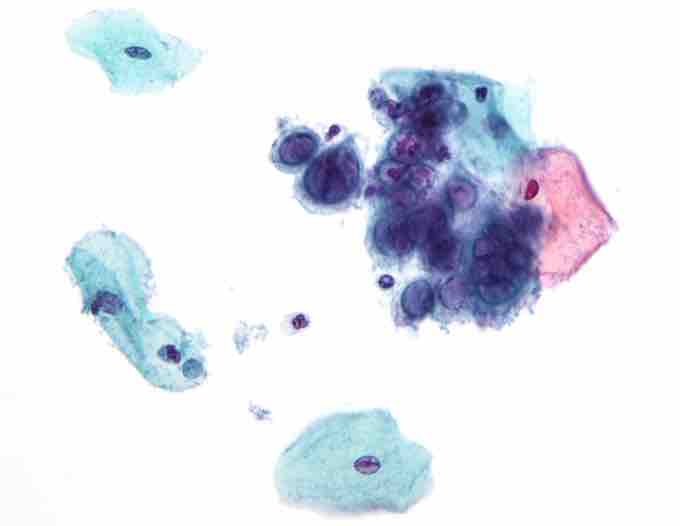Cell culture is the complex process by which cells are grown under controlled conditions, generally outside of their natural environment. In practice, the term "cell culture" now refers to the culturing of cells derived from multi-cellular eukaryotes, especially animal cells. However, there are also cultures of plants, fungi, and microbes, including viruses, bacteria, and protists. The historical development and methods of cell culture are closely interrelated to those of tissue culture and organ culture. Animal cell culture became a common laboratory technique in the mid-1900's, but the concept of maintaining live cell lines separated from their original tissue source was discovered in the 19th century.
Viruses are obligate intracellular parasites that require living cells in order to replicate. Cultured cells, eggs, and laboratory animals may be used for virus isolation. Although embroyonated eggs and laboratory animals are very useful for the isolation of certain viruses, cell cultures are the sole system for virus isolation in most laboratories. The development of methods for cultivating animal cells has been essential to the progress of animal virology. To prepare cell cultures, tissue fragments are first dissociated, usually with the aid of trypsin or collagenase. The cell suspension is then placed in a flat-bottomed glass or plastic container (petri dish, a flask, a bottle, test tube) together with a suitable liquid medium. e.g. Eagle's, and an animal serum. After a variable lag, the cells will attach and spread on the bottom of the container and then start dividing, giving rise to a primary culture. Attachment to a solid support is essential for the growth of normal cells.
Cell cultures vary greatly in their susceptibility to different viruses. It is of utmost importance that the most sensitive cell cultures are used for a particular suspected virus. Specimens for cell culture should be transported to the laboratory as soon as possible upon being taken. Swabs should be put in a vial containing virus transport medium. Bodily fluids and tissues should be placed in a sterile container. Upon receipt, the specimen is inoculated into several different types of cell culture depending on the nature of the specimen and the clinical presentation. The maintenance media should be changed after one hour or the next morning. The inoculated tubes should be incubated at 35-37oC in a rotating drum. Rotation is optimal for the isolation of respiratory viruses and result in an earlier appearance of the cytopathic effects (CPE) for many viruses . If stationary tubes are used, it is critical that the culture tubes be positioned so that the cell monolayer is bathed in nutrient medium.

Cytopathic effect
Viral cytopathic effect of herpes simplex virus.